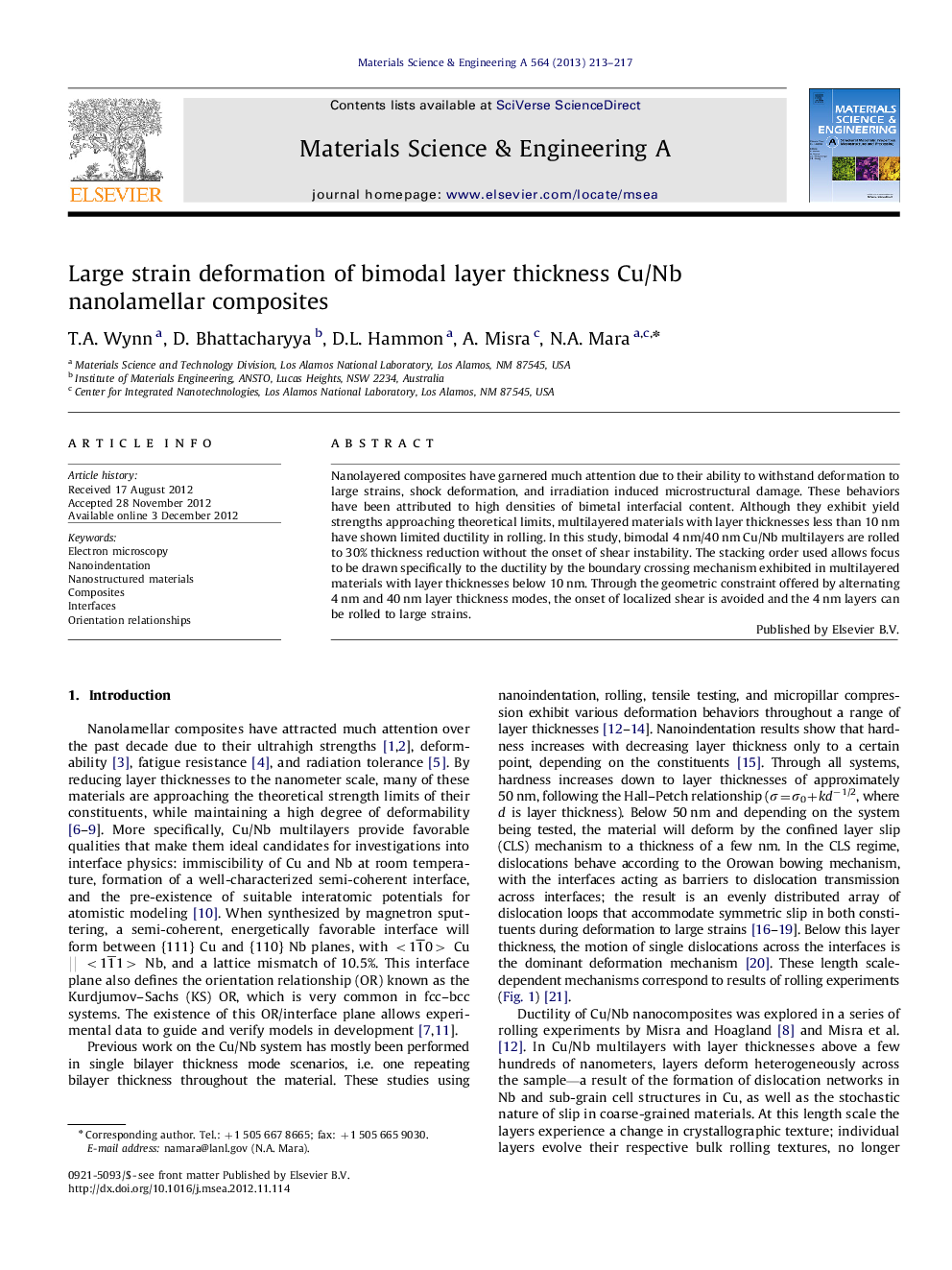| Article ID | Journal | Published Year | Pages | File Type |
|---|---|---|---|---|
| 7983317 | Materials Science and Engineering: A | 2013 | 5 Pages |
Abstract
Nanolayered composites have garnered much attention due to their ability to withstand deformation to large strains, shock deformation, and irradiation induced microstructural damage. These behaviors have been attributed to high densities of bimetal interfacial content. Although they exhibit yield strengths approaching theoretical limits, multilayered materials with layer thicknesses less than 10Â nm have shown limited ductility in rolling. In this study, bimodal 4Â nm/40Â nm Cu/Nb multilayers are rolled to 30% thickness reduction without the onset of shear instability. The stacking order used allows focus to be drawn specifically to the ductility by the boundary crossing mechanism exhibited in multilayered materials with layer thicknesses below 10Â nm. Through the geometric constraint offered by alternating 4Â nm and 40Â nm layer thickness modes, the onset of localized shear is avoided and the 4Â nm layers can be rolled to large strains.
Keywords
Related Topics
Physical Sciences and Engineering
Materials Science
Materials Science (General)
Authors
T.A. Wynn, D. Bhattacharyya, D.L. Hammon, A. Misra, N.A. Mara,
